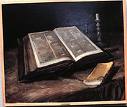
It is always a pleasure to visit the Victorian National Art Museum. We stayed there for three hours with the intent of only viewing the 16th century Flemish masters. What is the cliche, all good intentions are paved to Hell? We continued from the 16th century to the 20th century and by that time, my body and mind was about to fall into a heap due to exhaustion.
'I can't see anymore or I'll shut down!"
'My goodness, C, you look so pale, come on, let's go outside.'
Sitting outside with a much needed cup of coffee, next to the man-made water feature, the city air, water and crowd of visiting tourists, after a few minutes, all felt to be back to normal.
'We were in there too long, too much in too short of time.' I said.
'I think I understand what you're saying...' she replied.
'S, we should have remained in the 16th century, but we got greedy and wanted more, and there is a price for greed!"
'I knew I should have stopped with Rembrandt, all his wonderful sketches and those haunting self portraits. Really, when we come back again, we'll stay with the Flemish 16th century and Rembrandt."
She nodded her head, taking a sip of coffee, 'You're right, we didn't rush, but tried to take it all in moving at a pace impossible to do so."
My point is that one does not experience the same 'feelings' when moving through a print shop or surfing on the net, looking at representations of works of Art.
There's an energy that flows from the work that requires a response.
Rembrandt was a prolific collector of all 'things' unusual, from strange rocks to silly drawings from far away places. He would sketch these curiosities and incorporate them into his major projects. The NGV has a collection of these sketches and they're incredible.
When my friend literally carried me out of the gallery from too much engagement, I noticed a group of Asian tourists gathered around a small Picasso - a truly ugly painting - the flashes from their cameras blinking at the speed of light. Is it the beauty of the painting they were so enthusiastic about or the fact that it was an original Picasso? I truly believe it is the artist not the work that inspired so many photographs.
Depicted above is one of my favourite paintings by Rembrandt, "The Head of Christ."
The expression in the eyes tells it all...
As written before in this BLOG, art is about technique, and its undefinable energy that cannot be experienced, except by the original viewer. Art is a visceral experience and one's response to the work.
When at that precise moment in time, one can actually feel the artists' intent and Beauty...that, to my mind, is truly the purpose of Art.














